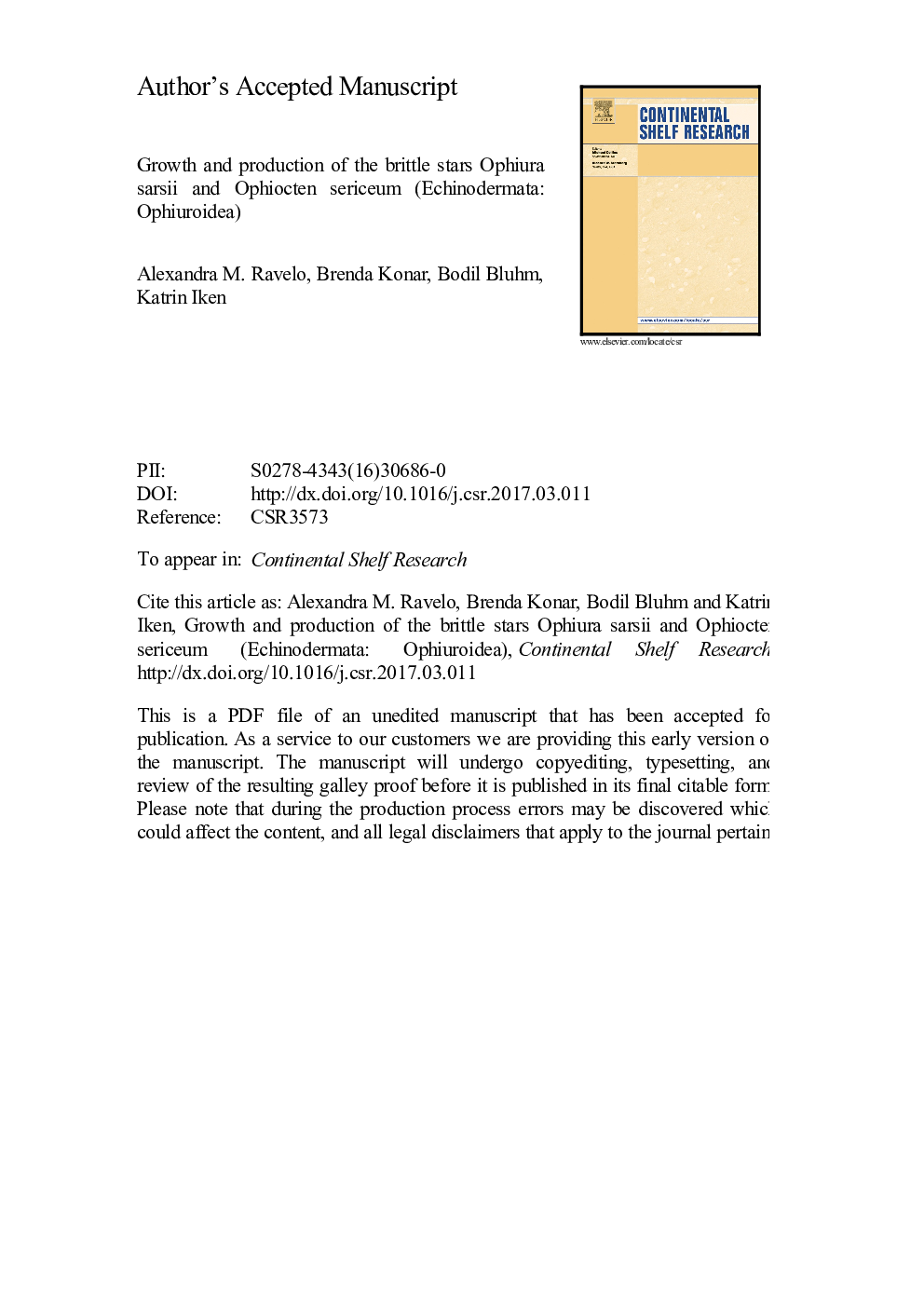| Article ID | Journal | Published Year | Pages | File Type |
|---|---|---|---|---|
| 5764554 | Continental Shelf Research | 2017 | 34 Pages |
Abstract
Dense brittle star assemblages dominate vast areas of the Arctic marine shelves, making them key components of Arctic ecosystem. This study is the first to determine the population dynamics of the dominant shelf brittle star species, Ophiura sarsii and Ophiocten sericeum, through age determination, individual production and total turnover rate (P:B). In the summer of 2013, O. sarsii were collected in the northeastern Chukchi Sea (depth 35-65Â m), while O. sericeum were collected in the central Beaufort Sea (depth 37-200Â m). Maximum age was higher for O. sarsii than for O. sericeum (27 and 20 years, respectively); however, both species live longer than temperate region congeners. Growth curves for both species had similar initial fast growth, with an inflection period followed by a second phase of fast growth. Predation avoidance in addition to changes in the allocation of energy may be the mechanisms responsible for the observed age dependent growth rates. Individual production was higher for O. sarsii than for O. sericeum by nearly an order of magnitude throughout the size spectra. The distinct distribution pattern of the two species in the Alaskan Arctic may be determined by environmental characteristics such as system productivity. Both species had equally low turnover rates (0.2 and 0.1, respectively), similar to Antarctic species, but lower than temperate species. Such characteristics suggest that the dense brittle star assemblages that characterize the Arctic shelf system could have a recovery time from disturbance on the order of decades.
Related Topics
Physical Sciences and Engineering
Earth and Planetary Sciences
Geology
Authors
Alexandra M. Ravelo, Brenda Konar, Bodil Bluhm, Katrin Iken,
